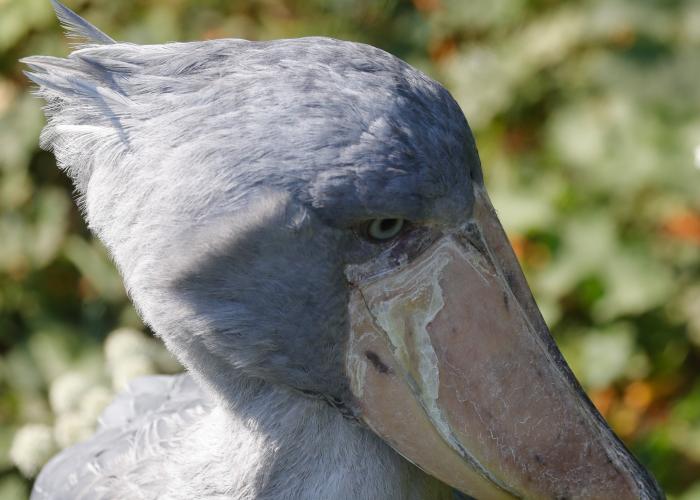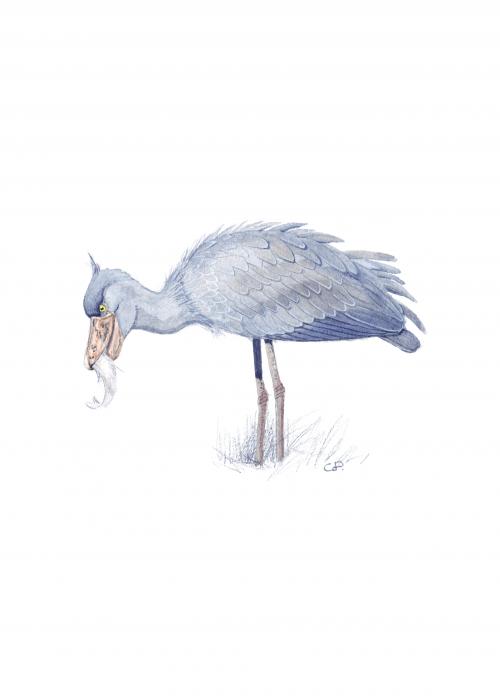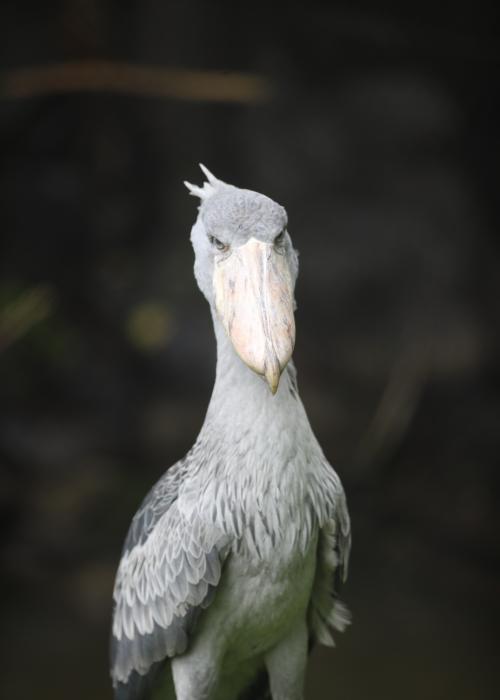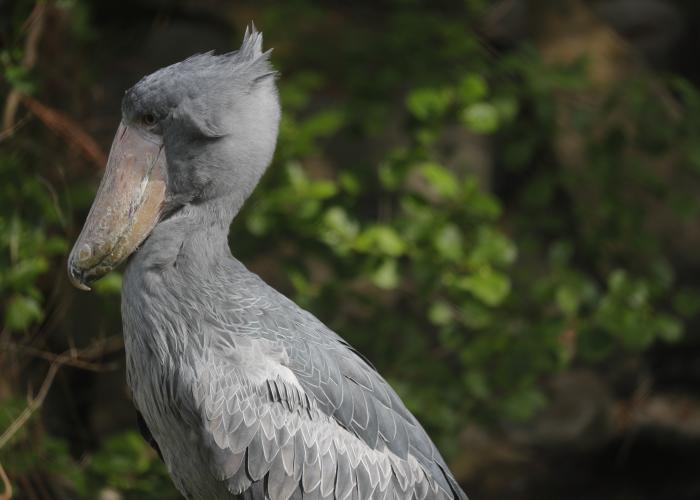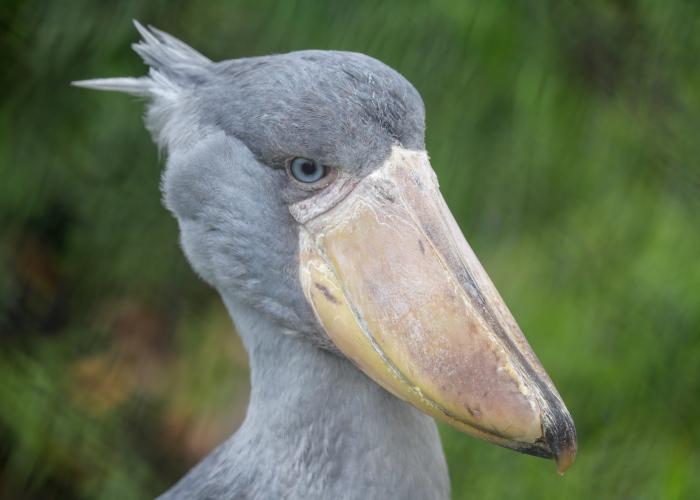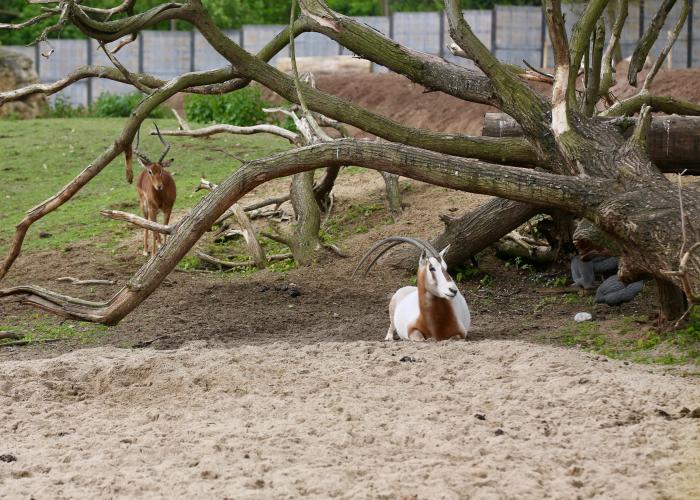The Shoebill
- Name : Shoebill
- Latin Name : Balaeniceps rex
- Origin : Central Africa, in the Lakes and Marshes to the East
- IUCN Status : Vulnerable
- Cites : Annexe II
The Shoebill
With its round little eyes and its vaguely ironic air when it stares at you, completely motionless, this large wader bird, of a pearl-grey colour, is rather related to herons and pelicans than to storks, with which it shares the silhouette, however. It is its beak which is especially remarkable : in the shape of a 25cm-long and 10cm-wide shoe, hence its so evocative local name : “ abou marqoub ”, Father of the Shoe!
The Shoebill Stork is so secretive that it was discovered by European scientists only in 1850, at the time of expeditions into the immense marshy areas of Africa, to the sources of the Nile. Living in wetlands, it feeds not only on fish, but also on snakes, frogs and young varanes or crocodiles, which it swallows whole by dredging the mud with its extraordinary beak.
It is a bird that is seldom seen in captivity : Pairi Daiza was the first park in the world to have succeeded, in 2008, to hatch two chicks : Abou and Marqoub.
The shoebills in Pairi Daiza are visible from mid-may until september.
